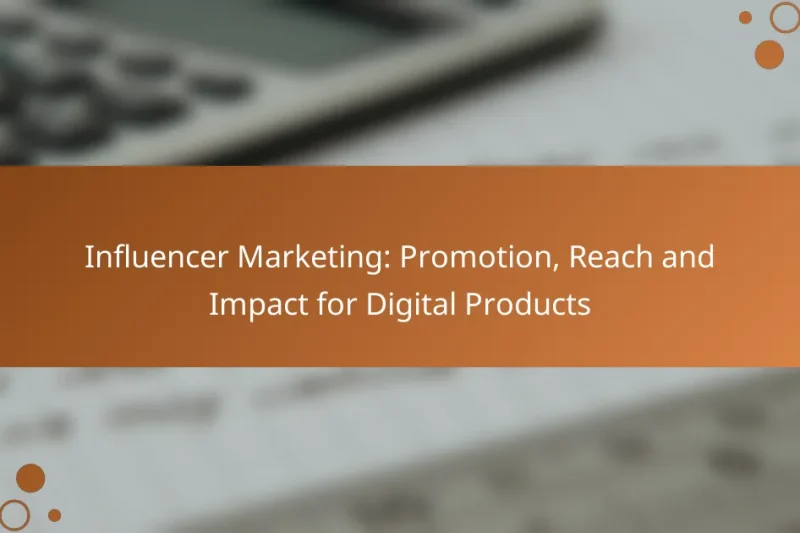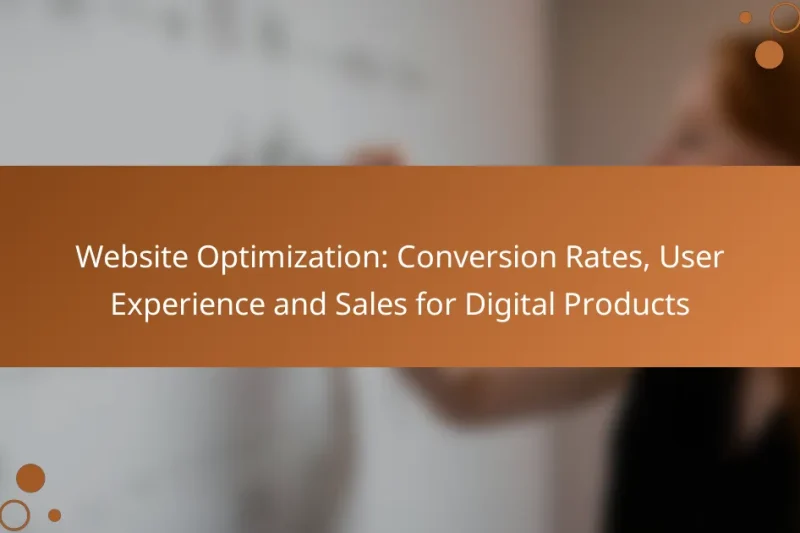Email marketing is a powerful tool for boosting sales of digital products by enabling direct communication … Email Marketing: Strategies, Automation and Sales Boost for Digital ProductsRead more
Digital Products: Marketing Strategies
In today’s competitive landscape, effective marketing strategies for digital products are essential for success. A combination of content marketing, social media advertising, email campaigns, search engine optimization, and influencer partnerships can significantly enhance brand visibility and engagement. By leveraging these strategies, businesses can effectively reach their target audiences, drive conversions, and foster brand loyalty.
Content Marketing Plan: Launch Strategies, Audience Engagement and Promotion for Digital Products
A well-crafted content marketing plan for digital products is essential for maximizing visibility and driving engagement. … Content Marketing Plan: Launch Strategies, Audience Engagement and Promotion for Digital ProductsRead more
Social Media Marketing: Tactics, Engagement and Sales for E-books
Social media marketing plays a crucial role in boosting e-book sales by enhancing visibility and fostering … Social Media Marketing: Tactics, Engagement and Sales for E-booksRead more
Influencer Marketing: Promotion, Reach and Impact for Digital Products
Influencer marketing has emerged as a powerful tool for promoting digital products, capitalizing on the trust … Influencer Marketing: Promotion, Reach and Impact for Digital ProductsRead more
Paid Advertising Platforms: Comparison, Effectiveness and Cost for Digital Publishing
In the realm of digital publishing, choosing the right paid advertising platform is essential for maximizing … Paid Advertising Platforms: Comparison, Effectiveness and Cost for Digital PublishingRead more
Website Optimization: Conversion Rates, User Experience and Sales for Digital Products
Website optimization plays a crucial role in enhancing conversion rates for digital products by improving user … Website Optimization: Conversion Rates, User Experience and Sales for Digital ProductsRead more
Author Branding: Strategies, Visibility and Trust in Digital Markets
In the competitive landscape of digital markets, authors can effectively establish their brand by defining their … Author Branding: Strategies, Visibility and Trust in Digital MarketsRead more
What are effective digital marketing strategies for products?
Effective digital marketing strategies for products include a mix of content marketing, social media advertising, email marketing, search engine optimization, and influencer partnerships. Each strategy plays a crucial role in reaching and engaging target audiences, driving conversions, and building brand loyalty.
Content marketing
Content marketing involves creating valuable and relevant content to attract and engage a specific audience. This can include blog posts, videos, infographics, and podcasts that inform or entertain while subtly promoting your products. A well-planned content strategy can improve brand visibility and establish authority in your niche.
To succeed, focus on quality over quantity. Aim for a consistent publishing schedule and consider using SEO techniques to enhance discoverability. Tools like Google Analytics can help track engagement and refine your approach based on audience preferences.
Social media advertising
Social media advertising allows you to target specific demographics with tailored ads on platforms like Facebook, Instagram, and Twitter. These ads can be highly effective due to their ability to reach users based on interests, behaviors, and location. Start with a clear objective, whether it’s brand awareness, lead generation, or sales.
Set a budget and experiment with different ad formats, such as carousel ads or video ads, to see what resonates best with your audience. Monitor performance metrics like click-through rates and conversions to optimize your campaigns over time.
Email marketing
Email marketing remains one of the most cost-effective strategies for reaching customers directly. By building a targeted email list, you can send personalized messages, offers, and updates that encourage engagement and drive sales. Segment your audience to tailor content to different groups for better results.
Utilize automation tools to streamline campaigns and ensure timely delivery. Regularly analyze open rates and click-through rates to refine your messaging and improve overall effectiveness. Aim for a balance between promotional and informative content to keep subscribers engaged.
Search engine optimization
Search engine optimization (SEO) is the process of enhancing your website’s visibility in search engine results. By optimizing on-page elements like keywords, meta tags, and content quality, you can improve your chances of ranking higher for relevant searches. This organic traffic is often more valuable as it targets users actively seeking your products.
Focus on both technical SEO and content strategy. Regularly update your website with fresh content and ensure it is mobile-friendly. Tools like SEMrush or Moz can help identify opportunities and track your SEO performance over time.
Influencer partnerships
Influencer partnerships involve collaborating with individuals who have a significant following in your target market. These influencers can promote your products through authentic content, helping to build trust and reach new audiences. Choose influencers whose values align with your brand for the best results.
When planning partnerships, consider compensation models such as product exchanges, affiliate commissions, or flat fees. Track the performance of influencer campaigns through metrics like engagement rates and sales conversions to assess their effectiveness and refine future collaborations.
How can I leverage social media for digital product marketing?
Leveraging social media for digital product marketing involves using various platforms to reach and engage your target audience effectively. By implementing strategies such as targeted ad campaigns, user-generated content, and engagement through live events, you can enhance visibility and drive sales.
Targeted ad campaigns
Targeted ad campaigns allow you to reach specific demographics based on interests, behaviors, and location. Platforms like Facebook and Instagram offer robust targeting options that can help you connect with potential customers who are most likely to purchase your digital products.
To create effective campaigns, start by defining your audience and setting clear objectives. Utilize A/B testing to optimize your ads and monitor performance metrics such as click-through rates and conversion rates to refine your strategy.
User-generated content
User-generated content (UGC) can significantly boost your digital product’s credibility and appeal. Encourage your customers to share their experiences and reviews on social media, which can serve as authentic endorsements for your products.
Consider running contests or offering incentives for customers who post about your products. This not only increases engagement but also provides you with valuable content that can be shared on your own channels, enhancing your brand’s visibility.
Engagement through live events
Hosting live events on platforms like Instagram Live or Facebook Live can create a sense of community and urgency around your digital products. These events allow you to showcase your products in real-time, answer questions, and interact directly with your audience.
Plan your live events around product launches, tutorials, or Q&A sessions to maximize engagement. Promote these events in advance to build anticipation and encourage participation, which can lead to increased sales and customer loyalty.
What role does SEO play in marketing digital products?
SEO is crucial for marketing digital products as it enhances online visibility and drives organic traffic to your website. By optimizing content for search engines, businesses can attract potential customers without relying solely on paid advertising.
Increases organic traffic
Effective SEO strategies can significantly boost organic traffic, which refers to visitors arriving at your site through unpaid search results. This traffic is often more valuable, as users are actively searching for solutions related to your digital products.
To increase organic traffic, focus on keyword research to identify terms that your target audience is searching for. Incorporating these keywords naturally into your content can lead to higher rankings on search engine results pages (SERPs).
Improves visibility on search engines
Improving visibility on search engines is essential for reaching a broader audience. When your digital products rank higher in search results, they become more accessible to potential customers.
Utilize on-page SEO techniques, such as optimizing title tags, meta descriptions, and headers, to enhance visibility. Additionally, consider building backlinks from reputable sites, as this can further improve your search engine ranking and credibility.
What are the best platforms for selling digital products?
The best platforms for selling digital products include Shopify, Gumroad, and Amazon Kindle Direct Publishing. Each platform offers unique features and caters to different types of digital goods, making it essential to choose one that aligns with your product and target audience.
Shopify
Shopify is a robust e-commerce platform that allows users to create an online store for selling digital products. It supports various digital formats, including e-books, software, and music, making it versatile for different sellers.
Key considerations include subscription costs, which typically range from $29 to $299 per month, depending on the features you need. Shopify also charges transaction fees unless you use their payment gateway, Shopify Payments.
To maximize your success on Shopify, ensure your store is visually appealing and user-friendly. Utilize SEO best practices to improve visibility and consider integrating email marketing to engage customers effectively.
Gumroad
Gumroad is designed specifically for creators selling digital products, making it a straightforward option for artists, writers, and musicians. It allows you to sell directly to your audience without the need for a full-fledged website.
Gumroad charges a fee of 8.5% plus $0.30 per sale for free accounts, with lower fees available for paid plans. This makes it accessible for those just starting, but be mindful of the fees as your sales volume increases.
To leverage Gumroad effectively, focus on creating compelling product descriptions and high-quality visuals. Promote your products through social media and email newsletters to drive traffic to your Gumroad page.
Amazon Kindle Direct Publishing
Amazon Kindle Direct Publishing (KDP) is an excellent platform for authors looking to sell e-books. It provides access to a vast audience through Amazon’s marketplace, making it easier to reach potential readers.
KDP offers a royalty rate of 35% to 70% depending on the pricing of your e-book and distribution choices. Keep in mind that pricing your book competitively is crucial, as it can significantly impact sales.
To succeed on KDP, ensure your e-book is well-edited and formatted correctly. Utilize Amazon’s promotional tools, such as Kindle Unlimited, to increase visibility and attract more readers.
What metrics should I track for digital product marketing success?
To measure the success of your digital product marketing, focus on key metrics such as conversion rates, customer acquisition cost, and return on investment. Tracking these metrics helps you understand the effectiveness of your marketing strategies and optimize them for better results.
Conversion rates
Conversion rates indicate the percentage of visitors who take a desired action, such as making a purchase or signing up for a newsletter. A higher conversion rate suggests that your marketing efforts are effectively persuading potential customers. Aim for conversion rates between 2-5% for most digital products, though this can vary by industry.
To improve conversion rates, consider A/B testing different landing pages, optimizing your call-to-action buttons, and ensuring your website is user-friendly. Avoid common pitfalls like cluttered designs or unclear messaging, which can deter potential buyers.
Customer acquisition cost
Customer acquisition cost (CAC) measures the total cost of acquiring a new customer, including marketing expenses and sales efforts. Keeping CAC low is crucial for profitability; a good target is to keep it below 30% of the customer’s lifetime value. This ensures that your marketing investments yield positive returns.
To calculate CAC, divide your total marketing expenses by the number of new customers acquired in a specific period. Regularly review and adjust your marketing strategies to lower CAC, such as leveraging organic channels and optimizing paid advertising campaigns.
Return on investment
Return on investment (ROI) assesses the profitability of your marketing efforts by comparing the revenue generated to the costs incurred. A positive ROI indicates that your marketing strategies are effective, while a negative ROI signals the need for reevaluation. Aim for an ROI of at least 100% to ensure your marketing is financially viable.
To calculate ROI, use the formula: (Net Profit / Cost of Investment) x 100. Regularly analyze your campaigns to identify which strategies yield the highest returns, and focus your resources on those areas to maximize profitability.






